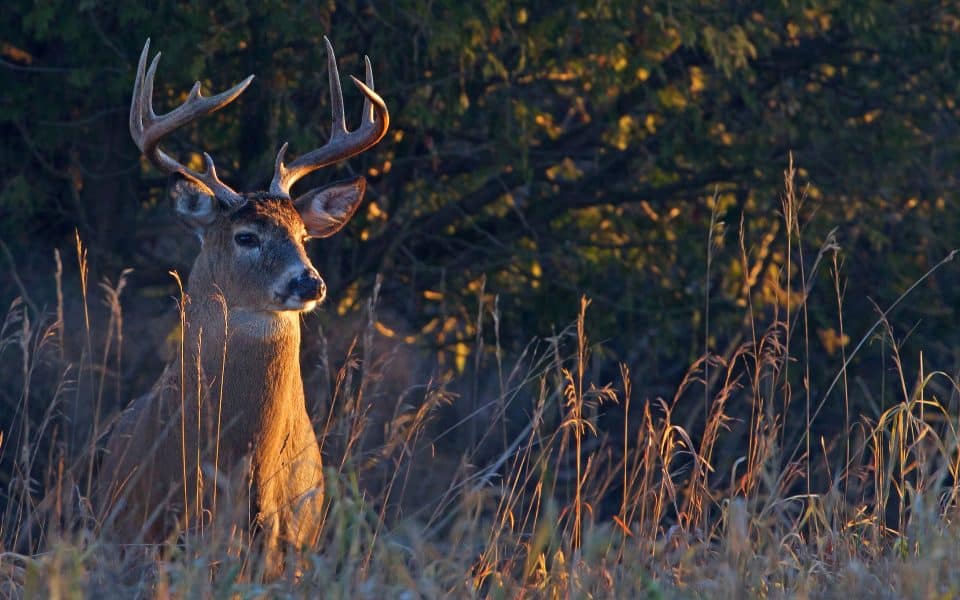The farms my friend and I hunt are large enough that we can go in and out without any major disturbance. It was not always like that when we were sharing a 55-acre deer hunting lease years before. Looking back, I got some nice deer on that small tract, but I didn’t realize until recently that I was adhering to a rule of “enter less/hunt longer.” I was younger and didn’t mind sitting in a stand for endless hours, the result were some nice deer. I now have grandkids hunting on my land and on occasion other hunters with less experience. One thing my sons and I continually emphasize, stay out there as long as you can, the more you come and go, the less your chances are of seeing a deer much less killing a good deer. With managing small hunting properties, the more important this rule becomes.
Big farms and big tracts of land seem to be disappearing quickly. You don’t have to drive very far before you see sub-divisions or “Farm for Sale, Will Divide.” It is a common trend over much of the country. As a Land Specialist with Mossy Oak Properties, I can tell you every potential buyer has their sights set on their own piece of land, but there is always a price limit which computes to “just how small of a tract can I get by with, or how large can I afford”?
I remember when I was a commissioned Conservation Officer, my partner and I were working opening day of deer season. We were on our way to a section of the county known for heavy deer hunting activity but taking a shortcut through a section of the county that was loaded with 5-acre tracts called “mini-farms” when we saw this fellow in pajamas and an orange vest standing in his yard with a rifle. We pulled over and sure enough he had just shot a nice 150-inch buck off his back porch. No habitat work, no stand, nothing but a mowed yard. Luckily for him, he had remembered to put his orange vest over his pajamas before he walked out to check the deer! A prime example of being in the right place at the right time.
Another fellow I knew managed to drop a nice buck in his front yard through the bathroom window with a rifle right after he had stepped out of the shower. According to his neighbor, “Bob was so excited he ran out the door to make sure the deer was dead, not only forgetting to put on his hunter orange but everything else.”
Evaluating Small Tracts and Habitat Needs
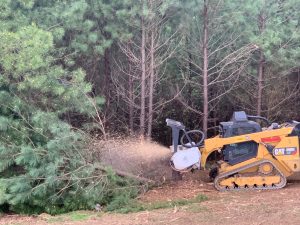
Michael Gray
East of the Mississippi River there are many small properties that potential gamekeepers are thinking about purchasing, enabling them to start managing their own land for whitetails and other game. Many of these properties are 80-acres or less, some 20-acres or less. Is it worth it? Can you improve the herds health, size, and your hunt success on a small tract? If you are thinking about improving deer habitat, consider that a deer will generally use around a square mile in their home range during the year. Also consider that a square mile will not even take in the normal annual home range for a flock of turkeys. On the other hand, you can have some award-winning duck hunts on less than ten acres if it is in the right location. Everything is contingent on location and the species.
All that aside, I would say you can have success with smaller tracts if you understand one point, you are not providing “total needs” but “missing needs.” In other words, what is the missing habitat link you can provide? No matter how well you improve your place, you cannot totally influence every animal whose home range overlaps your property, but you can improve things by providing one or more of the missing elements such as food, water, cover, or sanctuary. Find this missing link and you will have deer on your land.
How do you determine what is the most critical limiting factor? Should you talk to your neighbors about improving habitat or keep quiet about what you’re doing? They may not always tell you, and one thing is for sure, don’t count on being as lucky as those two fellows I mentioned earlier in the article.
Small Hunting Properties Management
First, start with the big picture…from above. Turn on your computer and click on Google Earth. Zoom in on your land and pick out important features. Biologists refer to this as remote sensing. Looking at satellite maps is easy but if you are not entirely familiar with the process of interpreting aerial photos, don’t worry, everyone has to learn.
If you spend any time at all hunting on this ground, when you look at the map for the first time you will quickly pick up where your stand is located, how to distinguish roads, powerline right of ways, foodplots, crops, grown up fields, clearcuts, pine or cedar thickets. If the satellite photo was taken during the winter (verses the summer) there will be some differences, but study what the forest canopy looks like. Then, walk around the land. Now you are ground truthing or comparing what you are looking at on the ground verses what you see in the satellite photo.
Many observers just see the forest and not the trees. Begin looking at the forest canopies, the uniform size and shape of young forests verses the patchy or odd shapes of larger trees in older forests. The young forest is probably in the “pole stage” while older forests are where your hardwood mast production will usually be located.
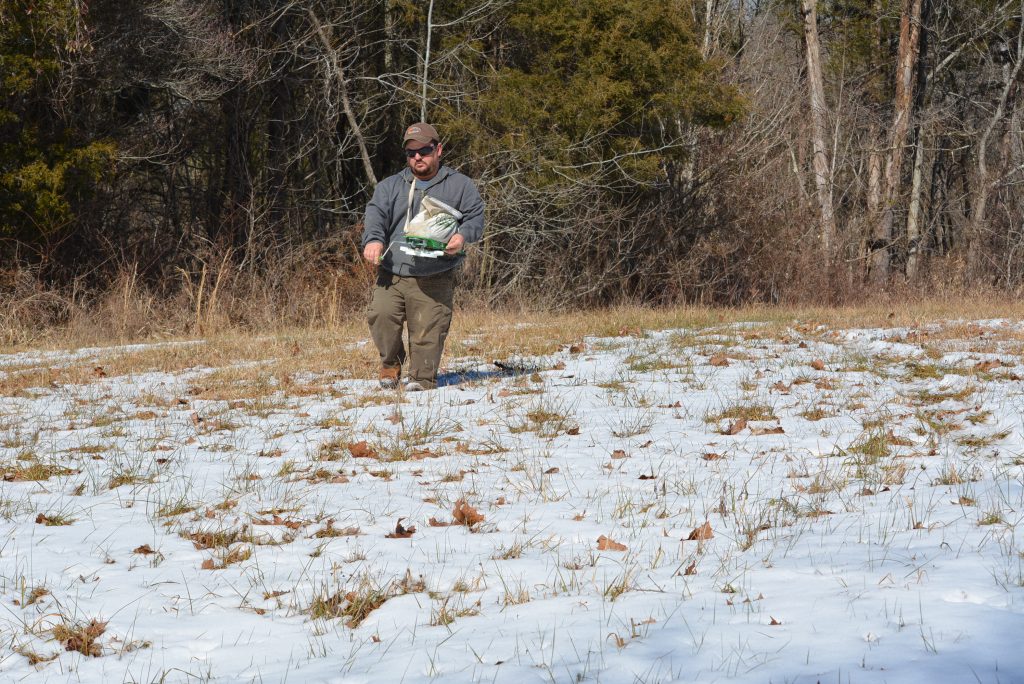
Richard Hines
After you have a good concept of what you have on your land through looking at aerial images, begin looking past your border. Expand past your boundary to see what the neighbors have, then look out a quarter mile, a half mile. A square mile is 640-acres and in most cases is around the average home range size for a deer.
Now, the idea is to evaluate what your neighbors have or do not have. This should help you determine what the missing element is, or more importantly, what you should work to provide! If you are surrounded by forest land and you have open ground, then work up a mixture of high energy food plots and/or fawning areas with “weedy” vegetation. If the neighbors are doing, or have done any extensive timber harvesting, there will be a lot of food in the form of browse and forbs available in the cutover areas. This may indicate that there could be a shortage of hardwood mast next door. Begin managing your oaks to increase acorn production by using timber stand improvement or other methods of thinning to help oak production. There is a short window in the fall when acorns are dropping and every deer within a mile will shift to these areas. This may be your missing link.
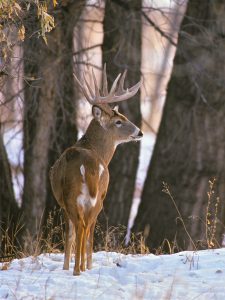
dreamstime
Some may be arguing with me about the one square mile in a deer’s home range. That is correct because this varies state to state, county to county and habitat to habitat. One square mile is too general a number. These home range sizes are variable for bucks or does, does with, or without fawns, and obviously bucks can range out several miles during the rut as they go about annual search for does.
Other factors affecting a deer’s home range is the influence of humans. How people act, numbers of dogs in neighborhoods, buildings, distance from roads, housing developments or where crops are located. Secure areas within their home range even change seasonally as crops are planted and/or harvested, when foliage drops off the trees and numerous other factors. When corn goes into the silk stage, deer temporally shift their range to begin feeding on this crop. Wooded strips between subdivisions create travel corridors. Researchers also found out that bucks older than 5-years tend to have slightly smaller home ranges than younger bucks, probably because they have established themselves in the best habitat.
If you have neighbors that use the term, “if its brown its down” then I would start with developing a sanctuary. Obviously, you want to hunt, but in this case, limited hunting may pay off with the opportunity to take a nice buck. Within your sanctuary, provide loafing areas of early succussion habitat, native warm season grasses, or evergreen cover are all good choices. If evergreens are so thick, ground cover will be lacking, cut gaps to allow daylight to reach the forest floor.
Provide one or two good mineral blocks. Mineral licks have been shown to influence home range selection especially for does in the spring and summer. These does likewise attract bucks out on their annual fall forays looking for does. If you have feeders, keep them on the opposite side of the property away from heavy hunting pressure, but close enough to your entrance where you are not driving into the core of your land to fill feeders. Researchers following radio tagged deer found them moving into sanctuaries away from heavily hunted areas, even if these sanctuaries were “lightly hunted.” Your term should be “enter less/stay longer?”
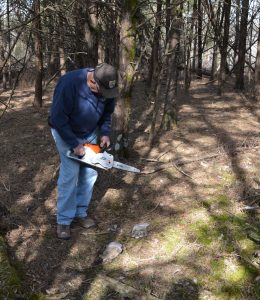
Richard Hines
If you are going with food plots, consider that a deer eats about a ton of dry weight forage each year. If you want a deer per 10 or12 acres, then plan on increasing this tonnage. A small tract may require as much as 10% or more of the property in high quality foods. This could get time consuming so also look at your woodlands. Begin by removing any invasive plants to give oaks and other native trees a better chance.
If your forest has been cut over in the past and you can identify young oaks coming up, cut around them so as much daylight as possible reaches them. Young oaks are shade intolerant and won’t have a fighting chance against faster growing and shade tolerant trees until they are six to ten feet tall. If you are planning a timber harvest, pick a year that has a heavy acorn crop and within a couple of years, follow-up with a timber stand improvement to remove undesirable trees that shade the oaks.
A waterhole is a plus and will not only help deer but provide a needed component for turkeys as well. Waterholes are especially important the further west you are, but deer do use them in the east and during dry years, you will have a goldmine. Keep the dam and shoreline clear of any woody vegetation which will help extend the life of the waterhole.
In addition to “enter less and hunt longer,” make sure stands are set to take advantage of daily wind patterns. Hunting a “good stand” just to be in it, without regarding the wind can ruin a good location by educating bucks.
And you don’t have to worry about massive equipment. As an example, one friend has around 60 acres and only uses a small garden tractor to manage his four ½ acre food plots. Since the bulk of his land is forested, most of his habitat efforts are directed at managing forest succession and taking care of his oak trees.
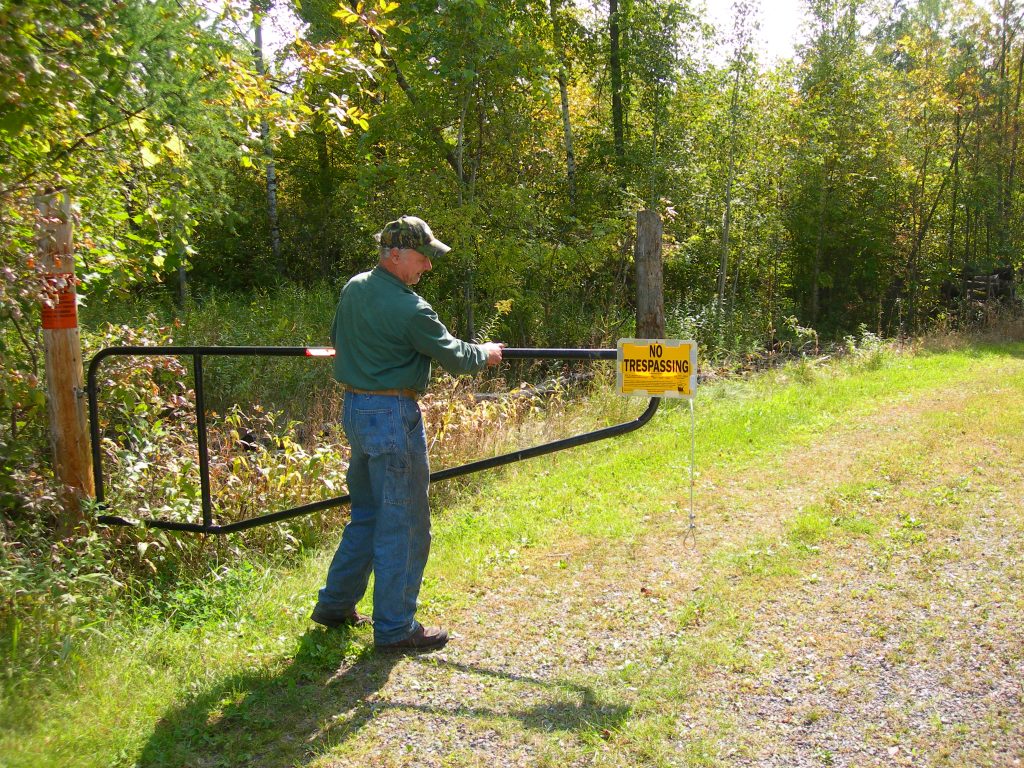
Richard Hines
Cooperation Among Neighbors
Also, a little cooperation goes along way. Get to know your neighbors, find out what their goals are, if they are hunters, it’s a good chance they will want the same things you do. If you have more open cover, you may have enough space for a dove field. Consider having a dove shoot for you and adjacent landowners. It’s a good time to talk over harvest strategies and cooperative management. Once the dove hunt is over, replant the fields in a variety of winter crops. If you don’t have enough room for a dove field, then have a BBQ and invite neighbors, there is no formal or legal binding agreements other than a gentlemen’s agreement. Some state wildlife agencies encourage landowner cooperatives and may have guidelines to help get the process started. Check with your local wildlife biologist for more details.
Finally, when hunting smaller tracts, the “enter less/hunt longer” remains the best tool for helping to take nice bucks. This along with identifying the missing habitat link makes it entirely possible to successfully manage small properties.
Join our weekly newsletter or subscribe to GameKeepers Magazine.
Your source for information, equipment, know-how, deals and discounts to help you get the most from every hard-earned moment in the field.

